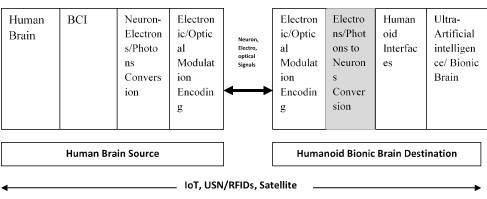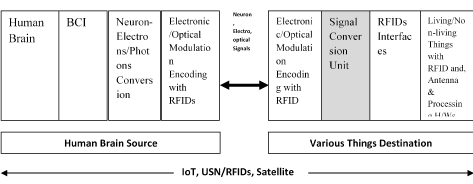Background:
Patient understanding is a fundamental requirement for the consent process, yet current UK Department of Health consent forms rely on handwritten explanations on admission prior to cardiac surgery. A pre-printed consent form containing pertinent information about the planned procedure and its associated benefits/risks may benefit in patient retention of information.
Trial Design:
Randomised study using a pre-test/post-test design in which participants completed a questionnaire prior to providing consent and following surgery.
Methods:
100 patients scheduled for coronary artery bypass surgery were recruited and randomised by computer into two groups receiving either the current standard handwritten consent form (group 1) or a modified pre-printed consent form (group 2).
Objective:
To assess whether a standardised, pre-printed consent form improves patient information retention and experience of the consent process.
Results:
No significant differences in demographics or pre-consent questionnaire data were observed between groups. A greater proportion of patients could identify (62.0% vs. 30.0%, p=0.011) and understand their surgical procedure (66.0% vs. 20.0%, p=0.001) in group 2 compared to group 1. Group 2 exhibited greater understanding of the benefits (72.0% vs. 8.0%, p<0.001) and risks (82.0% vs. 10.0%, p<0.001) of the surgery and indicated greater satisfaction with the consent process post-operatively (94.29% vs. 85.22%, p<0.001) compared to group 1.
Conclusion:
This study highlights the importance of a written explanation on the consent form, which encourages greater patient understanding and aids in shared decision making between the surgical nursing team and the patient.
BBCM, BHCM, BTCM, BCI, humanoid, IoT, bigdata, USN, RFID, neuromodulation, cyborg, cybermatic
Brain-to-Brain Communication Model (BBCM)

Above model display how Brain-to-Brain communication possible to establish in near future. Here two or many brains continue can change in source to destination alternatively for communication and data/information exchange from one to another brain. All the neurons signal of brain changes to information using BCI and to send it to another brain neuromodulation use. This would be similar to regular electronic modulation and demodulation but instead of electrons information encoded and decoded using neurons virtual brain to brain modulated signals. Brain-to-Brain near field communication established using low frequency transmitter and receiver but to establish Brain-to-Brain communication between two remote human brains located worldwide we need RFID Antenna and Satellite based IoT.
Brain-to Humanoid Communication Model (BHCM)

This is my second model to showcase future possibility to establish communication between human brain and humanoid robots bionic brain using additional requirements to humanoid side and human side. Since humanoid processing electronic or optical based, hence brain neurons signal converted into information using BCI and cybermatic and neuro-information converted into equivalent electrical or optical signals and then fed to modulation encoding. At the humanoid side signal received and processed by humanoid interfaces and given Ultra Artificial Intelligence (UAI) based bionic brain. When communication from Humanoid Bionic-to-Human Brain at that time humanoid need electrons/photons to neurons conversion.
Brain-to-Things Communication Model (BTCM)

My last model depicted how communication possible between human brains and living/non-living things. In this case human brain side explanation remains same as to BHCM human brain source side but change to considering destination as various Things. Hence everything has its own unique RFID to explore and establish communication worldwide with sensing antennas and USN using IoT, Bigdata and satellites. Here after/before encoding/decoding as source/destination we need to engineer signal conditioning units which stabilized various signals forms and send RFID interface to convert send signal to process by living/non-living things with RFID and, Antenna & Processing H/Ws.
I have displayed three important models BBCM, BHCM and BTCM to understand you what future communication forms are and how it would be possible. I have discussed with models Brain-to-Brain, Brain-to-Humanoid and Brain-to-Things communication patterns. I also like to state these models possible hybridize as Humanoid-to-Things, Things-to-Things and Humanoid-to-Humanoid communication using polymorphism forms of source and destination sides interchange of these three models.
- Jefford M, Moore R (2008) Improvement of informed consent and the quality of consent documents. Lancet Oncol 9: 485-493. [Crossref]
- Seeking patients' consent: The ethical considerations. London: General Medical Council; 1998.
- Butow PN, Brown RF, Tattersall MH (2000) Ethics of clinical trials. N Engl J Med 342: 978. [Crossref]
- Chandrasekharan DP, Taggart DP (2011) Informed consent for interventions in stable coronary artery disease: problems, etiologies, and solutions. Eur J Cardiothorac Surg 39: 912-917. [Crossref]
- Larobina ME, Merry CJ, Negri JC, Pick AW (2007) Is informed consent in cardiac surgery and percutaneous coronary intervention achievable? ANZ J Surg 77: 530-534. [Crossref]
- Price DD, McGrath PA, Rafii A, Buckingham B (1983) The validation of visual analogue scales as ratio scale measures for chronic and experimental pain. Pain 17: 45-56. [Crossref]
- Childers R, Lipsett PA, Pawlik TM (2009) Informed consent and the surgeon. J Am Coll Surg 208: 627-634. [Crossref]
- Carle C, Ashworth A, Roscoe A (2009) A survey of post-sternotomy chronic pain following cardiac surgery. Anaesthesia 64: 1387. [Crossref]
- Uzzaman MM, Tayeh S, Sinha S, Ratnasingham K, Stoker DL (2011) Consenting practice for laparoscopic cholecystectomy - are we doing enough to warn patients about their operation? Int J Surg 9: 643-647. [Crossref]
- Hoosein MM, Towse H, Conn G, Stoker DL (2008) Consenting practice for open inguinal hernia repairs - are we failing to warn patients of serious complications? Ann R Coll Surg Engl 90: 643-646. [Crossref]



